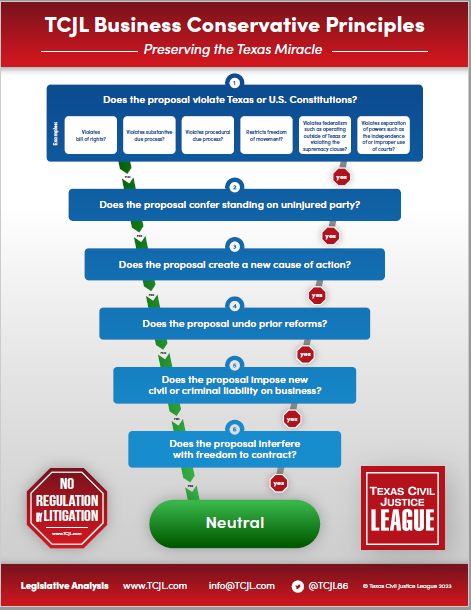 In a significant victory for the medical cost containment provisions of the workers’ compensation system, the Austin Court of Appeals has affirmed the decision of several administrative law judges denying most of the reimbursement sought by hospitals that perform a large number of spinal surgeries on injured workers.
In a significant victory for the medical cost containment provisions of the workers’ compensation system, the Austin Court of Appeals has affirmed the decision of several administrative law judges denying most of the reimbursement sought by hospitals that perform a large number of spinal surgeries on injured workers.
Vista Medical Center Hospital, Surgery Specialty Hospital of America, Southeast Houston and Vista Hospital of Dallas v. Texas Mutual Insurance Company, et al (No. 03-21-00242-CV; filed December 28, 2022) arose from a dispute between Vista and several dozen workers’ compensation carriers and self-insured employers over reimbursement for more than 500 surgeries (predominantly spinal surgeries) performed from 1997 to 2008. Pursuant to the 1997 medical cost containment measures enacted by the Legislature and the agency rules implementing them, these procedures were reimbursed at the so-called “per diem” rate. In case of “an unusually costly or lengthy stay,” however, the rule established an “independent reimbursement methodology—called the ‘stop loss exception’—to ensure fair and reasonable compensation to the hospital for unusually costly services rendered during the treatment to an injured worker.” In order to qualify for this exception, the hospital’s total audited charges must meet a $40,000 threshold. The dispute arose from the interpretation of the threshold amount. Vista argued that as long as charges for admission exceeded $40,000, the exception would apply. The carriers contended that the hospitals not only had to show that they exceeded the threshold but also prove, “by a case-by-case analysis, that admission involved unusually costly and unusually expensive services.”
In a prior decision, Texas Mut. Ins. Co. v. Vista Cmty. Med. Ctr., LLP, 275 S.W.3d 538 (Tex. App.—Austin 2008, pet. denied) (Vista I), the court sided with the carriers. After SCOTX denied review, Vista returned to the agency and commenced medical dispute resolution. The DWC decided in favor of the carriers. Vista requested a contested case hearing, which was heard by a panel of five ALJs. The central issue in the hearing involved the appropriate methodology for determining “whether an admission that exceeds the stop-loss threshold ‘involved unusually costly and unusually extensive services.’” The carriers argued that this determination required three steps: (1) whether the per diem payment covered the hospital’s costs; (2) if not, whether a physician with the same or similar specialty, upon examination of the medical records, found that any of the services provided were “unusually extensive” in relation to other admissions with “the same principal procedure”; and (3) a case-by-case analysis “to determine if the hospital’s loss was due to the unusually extensive services or some other factor.” Vista proposed a “bright-line” test based on the weighted DRG for the admission assigned by CMS. Using this methodology, Vista claimed entitlement to additional reimbursements exceeding $8.8 million. The ALJs applied a case-by-case analysis, which reduced Vista’s reimbursement to $1 million. The district court affirmed, and Vista appealed.
The court of appeals rejected Vista’s “bright-line” test as incompatible with both agency rules and its decision in Vista I. Though it did not fully adopt the carriers’ proposed methodology, the court endorsed the ALJ’s case-by-case analysis as matters better left to the agency in accordance with Vista I. The court also rejected Vista’s arguments that the ALJ’s ruling was arbitrary and capricious (it was properly based on a prior DWC rule that was in effect during the relevant 1997-2008 time period) and that the ALJs failed to provide findings of fact as to each disputed claim (ALJs are not required to issue findings of “underlying fact” unless the relevant authorizing statute demands them, and ALJs are presumed to have complied with the law unless the claimant proves otherwise). Vista argued further that the difference between its claim for $8.8 million and the ALJs’ award of $1 million was facially “unreasonable.” The court held that a simple disparity is not relevant to a determination of “reasonableness” and that nothing in the agency’s rules makes it so. Finally, the court found that the ALJs’ decision was supported by substantial evidence. Vista failed to carry its burden of proof that their services were “unusually extensive” because it only offered as evidence the weighted DRG methodology that ignored individual cases. In fact, the carriers’ expert testified “the Vista Parties’ method would deem every back surgery assigned to DRGs 496, 497, 498, 500, or 520, ‘no matter how routine’ to ‘have involved unusually extensive and unusually costly hospital services.’ This would result in the stop-loss exception applying to essentially every case involving those procedures.” The court of appeals affirmed the trial court and upheld the administrative decision.
This is an important decision that upholds the integrity of the workers’ compensation medical cost containment provisions and the validity of the administrative process for determining medical fee disputes. There has been some criticism of asking the existing courts of appeals, which are of course elected from districts, to decide administrative cases that have statewide application. While the Austin Court of Appeals in the past may have had an oversized influence on these cases, docket equalization has largely eliminated that potential problem, and we now see decisions on administrative cases coming out of every court of appeals district in the state. Perhaps a better question would be whether appellate justices currently on the bench are qualified to hear appeals from administrative decisions, or whether a statewide court of appeals with jurisdiction over administrative cases should require its justices to have significant experience in administrative law.
If that is a valid question, would it improve the system (assuming that it needs improvement) if a mechanism existed for SCOTX or some other competent authority to create an appeals panel that could be activated for certain types of complex administrative appeals involving unsettled legal questions? The panel could be composed of, say, three justices, selected from among active, former, or retired appellate justices for their experience and background in those cases. If geographic distribution was important, the panelists could be drawn from different districts to provide a “statewide” perspective. Something like this may be less costly than an entirely new court for the purpose of disposing of the vast majority of administrative cases that are relatively routine and follow a well-worn jurisprudential path. After all, SCOTX is still there to correct any serious errors when and if necessary. At any rate, when considering a new court for administrative cases, we should look carefully at the specific cases we mean for that court to handle (i.e., the ones we think require specific judicial capabilities) and fashion the remedy to fit the problem.












